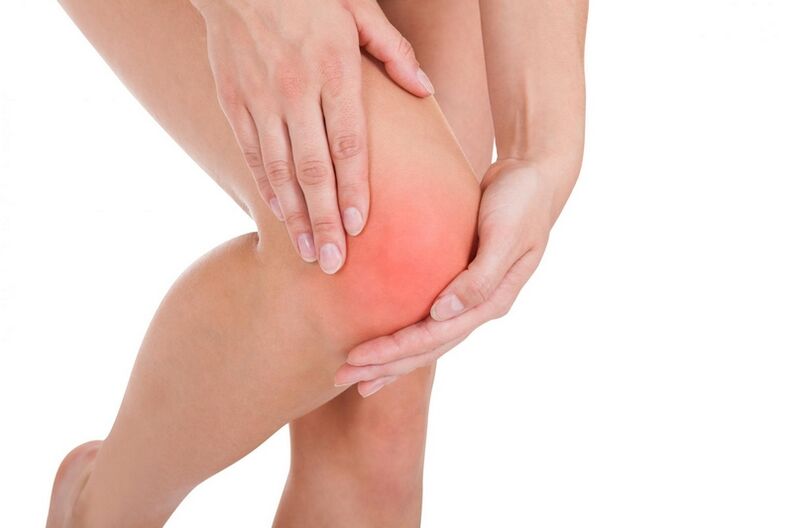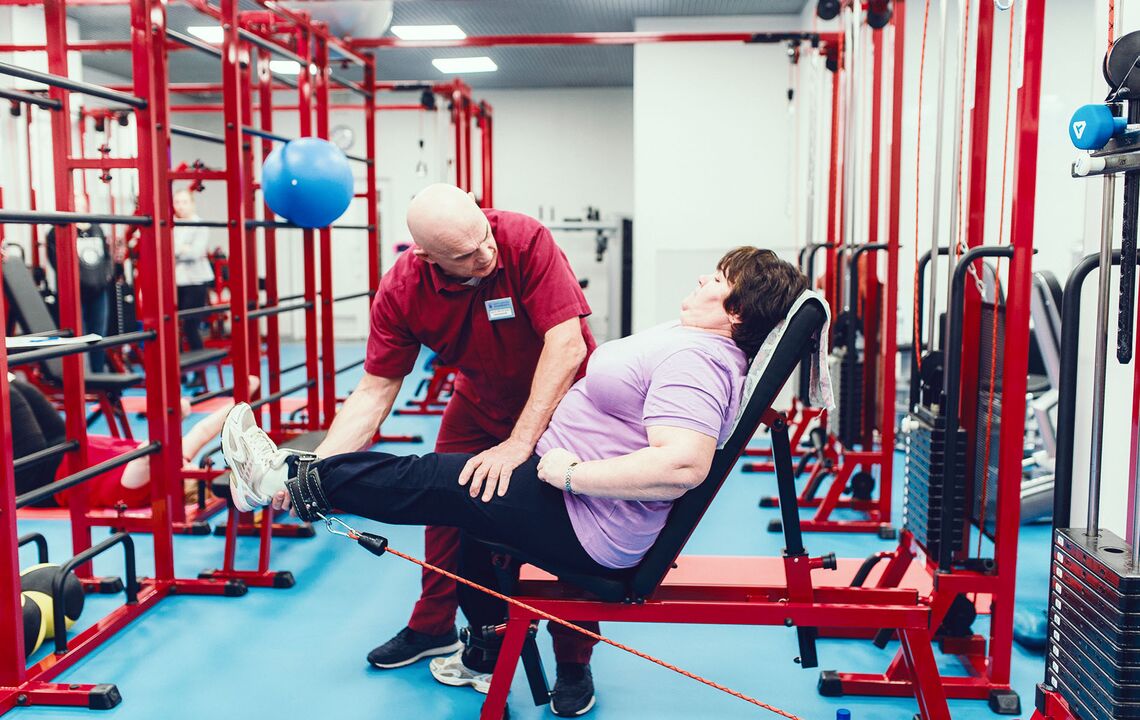Osteoarthritis of the knee joint is one of the most common diseases of the musculoskeletal system and, unfortunately, the most common cause of loss of mobility, disability and sometimes disability.When osteoarthritis occurs, the cartilage lining the affected joint surface cannot be restored, causing the joint to stop functioning normally and causing pain.
Officially, the disease is called “osteoarthritis deformity”;Another name is gonorrhea (from the ancient Greek word “goni” - knee).The knee joint is the largest joint in the human body and is most commonly affected by osteoarthritis.Much less commonly, the disease affects the hip and ankle joints.
How does gonorrhea happen?
Normally, healthy cartilage is elastic and smooth, it completely covers the moving areas of bones and allows them to slide.Cartilage also reduces the stress that bones receive when walking or exercising.

When cartilage is destroyed (this is a manifestation of joint disease), this top layer of elastic tissue becomes thinner.Sometimes the cartilage peels off, tears appear - this is the reason why the joint loses its main "shock absorber" and "load-bearing".The bones begin to rub against each other, the joint swells, loses its normal shape, and pain appears.
Causes of gonorrhea and risk factors
Osteoarthritis deformity is more common in older, overweight women, but this does not mean that young and physically active people do not suffer from this pathology.Sometimes the development of the disease is provoked by heavy manual labor or excessive stress in the gym.
Below is a complete list of causes of knee osteoarthritis:
- sports injuries - meniscus injuries, fractures and dislocations;
- inflammatory process in the joints and accompanying diseases;
- metabolic disorders - some diseases lead to the formation of deposits in the joints;
- excessive stress on joints, including prolonged standing or strenuous work that involves lifting heavy objects;
- Uneven load on the joints due to curvature of the legs - joint disease manifests itself faster in overloaded areas.
Much depends on genes - a person may be genetically predisposed to developing knee osteoarthritis.In such people, genes responsible for the development and stability of cartilage tissue are disrupted.
There are several factors that increase the risk of gonorrhea:
- increased body weight.Due to the increasing load on the joint, cartilage tissue wears out faster;
- age over 40. Most people at this age have reduced physical activity.Due to physical inactivity, muscles atrophy, weak muscle tissue does not provide enough nutrients to the joints, and the risk of cartilage damage increases.
Symptoms of arthritis
Knee osteoarthritis is not a disease that can appear suddenly.It is strongly anticipated: it all starts with a slight pain in the knee when walking.The pain may increase if you have to go up or down stairs.As a rule, the knee hurts at the beginning of movement, then the pain disappears and returns when the joint is subjected to prolonged load.
If you ignore these symptoms and do not consult a doctor about them, the disease will begin to progress.After that, the pain will change from sudden to constant, the knee will start to hurt more even when resting and swell.When cartilage degenerates, the mobility of the entire joint will be limited.
Some people find that their knees “react” to changes in the weather.This really happens - the nerve endings in the joint capsule are very sensitive to changes in atmospheric pressure.
The following symptoms are characteristic of gonorrhea:
- knee pain when moving and walking;
- morning stiffness when range of motion is minimal;
- knee swelling;
- - Dry and rough crunching sound when moving - this sound occurs due to friction of joint surfaces.
As the disease progresses, symptoms will change:
- the pain will bother you even at rest;
- joints are deformed and lose function;
- Because the knee is deformed, the gait will change.
Levels of gonorrhea
There are 3 stages of development of knee osteoarthritis.
level 1disease - almost no symptoms.It begins with the first manifestations of the disease - almost painless, such as tired legs - and lasts until the first bone deformities appear.If the knee has changed shape due to synovitis – that is, due to fluid building up in the joint but the intra-articular cartilage is not damaged, the disease is still in stage 1.

level 2Characterized by gradual changes in bone tissue.Externally, the knee may look like it did in stage 1 - deformed and increased in size.The pain increases: in addition to the pain that appears when moving, there is also a crunching sound in the affected knee.Joints become less mobile, making it difficult to squat and walk on uneven surfaces.
level 3The level of gonorrhea is the most painful.At this stage, there is almost no cartilage tissue left and if the disease is severe, the bones can grow together.After that, the joint becomes completely immobile and the person can move only with the help of crutches or a cane.Usually at this point, doctors will make a judgment about an arthroscopic approach to the damaged joint.
Important: only a doctor can determine the exact degree of development of the disease.Sometimes, with mild symptoms, the disease seriously affects the perichondrium - therefore, for an accurate diagnosis, additional studies are often performed:
- X-ray - to see if the cartilage surface is deformed and what condition the joint space is in;
- CT or MRI - for more detailed study.
How is gonorrhea diagnosed and treated?
The first thing to remember is that timely diagnosis and early treatment will help prevent the disease in the first place.Therefore, the appearance of the first discomfort in the knee joint is a good reason to see a doctor and get examined.
Doctors make a diagnosis of osteoarthritis based not only on medical history, complaints, and the current condition of the knee joint.The results of additional studies also play an important role - they are often prescribed to clarify the stage of gonorrhea and the severity of the disease.
To accurately diagnose knee osteoarthritis, doctors often prescribe:
- X-ray.If pathological processes have begun in the knee - for example, calcium crystals or bone tumors have appeared in the joint capsule - these changes will be visible in the photographs.Doctors often prescribe X-ray examination, but without a thorough examination of the knee joint, its mobility and the condition of the muscles that support it, the picture will be incomplete;
- Ultrasound - it can be used to evaluate the condition of the soft tissues surrounding and along the joint.Ultrasound complements X-ray results so doctors can see changes not only in bone structure but also in tissues;
- MRI - magnetic resonance imaging.An MRI scan is indicated for complaints of knee pain if the doctor suspects damage to the cartilage, ligaments, or tendons;
- Arthroscopy is an invasive examination method in which the joint cavity is examined from the inside using a camera.The cameras are inserted through small incisions in the skin;Through these same incisions, the doctor can perform small operations - for example, remove a piece of destroyed cartilage, partially smooth out uneven spots in the cartilage tissue, etc.
Treatment of joint diseases is usually carried out with medication, trying first of all to relieve pain, improve joint mobility and restore mobility.Arthritis causes irreversible changes in cartilage tissue - therefore, it is impossible to talk about a complete cure.But it is possible to stop the progression of the disease - and thus slow down further tissue destruction.
Here is the standard treatment for gonorrhea:
- topical remedies - patches, creams, ointments and gels;
- analgesic;
- anti-inflammatory drugs, especially non-steroidal drugs.Their use is considered the “gold standard” of medicine, but these drugs destroy the stomach lining;
- blockade and chondroprotector - drugs whose effects appear only after a long period of use;
- rarely - physiotherapy and home treatment.
It is recommended to wear orthopedic knee pads to support the joints and reduce pain.But all the methods listed above are methods that passively affect joint activity.
This treatment only relieves some symptoms - neutralizes pain, inhibits the inflammatory process, etc.The disease itself continues to progress, gradually destroying the joints.In the final stages of osteoarthritis, a person not only loses the ability to work, but also loses the ability to move.In such cases, the joint must be reconstructed - that is, an artificial structure must be installed in the knee.Such surgical intervention does not pass without a trace and imposes its own limitations - and therefore reduces the quality of life.
Methods of active influence on the joints have a completely different effect when using the body's resources, the tone of the muscles supplying blood and nutrients to the joints is restored.Such treatment is most effective if performed under the supervision of qualified and experienced physicians.
Treat gonorrhea with occupational therapy
Kinesitherapy, that is, movement therapy, activates the body's own forces.Correctly selected loads allow you to effectively work with the necessary muscles and, by strengthening the muscle corset, improve the condition of joints and cartilage.
Occupational therapy treatment begins with a thorough examination and necessarily muscle testing.An occupational therapist will examine your knee pain, analyzing the condition of muscle tissue, tendons and ligaments.Taking into account data from ultrasound, CT, MRI and radiography, the degree of gonorrhea is determined and a program of therapeutic exercises is drawn up.
Classes are conducted on a multifunctional simulator - a proprietary simulator with a special design.The exercises are performed in a way that avoids excessive stress on the joints and only affects those muscles that need to be strengthened and developed.In the initial stages, the patient is prescribed joint exercises on the ground - including exercises on the mat without weights.
The therapeutic effect of occupational therapy is ensured by restoring blood microcirculation and improving the lymphatic drainage system.Cartilage receives more nutrition, the progression of joint disease slows down to a complete stop, and the biomechanics of the joint are completely restored.
It is impossible to ignore such a serious disease as knee arthritis.The best way to prevent this condition is to have a healthy lifestyle: balanced diet, physical activity.But if joint problems have already begun, you should not wait for serious warning signs - at the first symptoms you should seek help from qualified doctors.

























